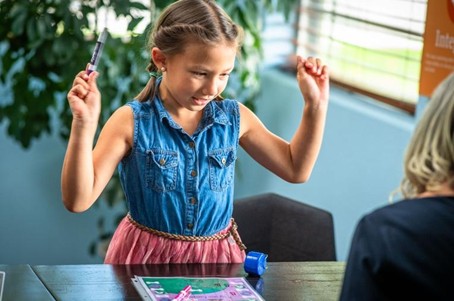(And why do students keep “mastering” things… only to forget them?)
Let’s be real for a second: the idea of mastery in education is kind of like a unicorn. Everyone talks about it. Everyone says they’re aiming for it. But when you go looking for it—in lesson plans, IEPs, or progress reports—it’s suspiciously hard to find.
Worse still, mastery often gets blamed for things it didn’t do. Ever heard this one?
“We taught that skill last year, but they just didn’t retain it.”
Or maybe:
“They mastered it before, but we have to re-teach it again this year… again.”
And so begins the never-ending loop of teach → test → forget → repeat.
It’s exhausting. And it’s not how real learning is supposed to work.
So, what is functional mastery, really? And why do schools often fall short of helping students achieve it in a lasting, meaningful way?
First things first: Mastery isn’t a feeling—it’s a fact.
You can’t eyeball it. Just because a student looks like they know what they’re doing doesn’t mean they’ve actually mastered the skill. Mastery isn’t about a good performance today. It’s about whether that performance will show up tomorrow, next week, and five months from now—in different settings, under pressure, and alongside other skills.
The good news? Functional mastery isn’t magic. It’s measurable.
We can actually track it using four key features: Stability, Endurance, Retention, and Application. Let’s break those down:
Stability – The “no-bounce” factor
If a skill is truly mastered, it shows up reliably—same level of precision, same quality of outcome—even when things get messy. We call this stability.
Think of it like a tightrope walker. If they can only stay balanced sometimes, they have not mastered their craft. Same goes for students—if they can only perform a skill occasionally, on a good day, in perfect conditions, that’s not mastery either.
We measure stability by looking at how much a student’s performance data bounces over time. Less bounce = more mastery.
Endurance – Can they go the distance?
Mastered skills don’t burn out fast. In the beginning, even five minutes of reading might feel like a marathon. But over time, with the right kind of practice, students should be able to keep going—and going—without crashing.
That’s endurance. And we can see it in the data. If a student’s reading speed starts strong but slowly drops off minute by minute, we know endurance is lacking. But when the skill is truly mastered, it holds steady—even as the task stretches out.
Retention – It’s like riding a bike
You know that feeling when you hop on a bike after years and you just know what to do? That’s retention—the sign that a skill has become part of your permanent repertoire.
In education, we don’t want skills that only last until Friday’s quiz. We want skills that stick around—even after long breaks, summer vacations, or time spent on other content.
Retention doesn’t have to be a mystery. We can plan to test for it by building in regular, spaced-out check-ins. That way, we’re not blindsided when it’s time to build on previous learning. Keep in mind that a failure of retention is not the student’s fault,
Application – Where the rubber meets the road
Bruce Lee didn’t just throw punches in a studio—he could adapt and kick butt in the chaos of real-world situations too. That’s what application is all about.
In learning, application means students can use a skill flexibly. They can pull it up when needed, combine it with other skills, and apply it in new or more complex ways.
For example, if a student has practiced seeing letters and saying their sounds, we should see that skill come alive when they start sounding out words. We can even track that growth—when improvements in the simple skill start driving progress in the more complex task, we’ve got proof of functional mastery.
Summary
Functional mastery isn’t about checking a box. It’s about building skills that are reliable, resilient, and ready for action. When students master a skill functionally, they don’t just pass a test—they own it, and they can use it in the real world.
So next time someone says a student “mastered” something but forgot it later, you’ll know: real mastery leaves a lasting mark. And when we measure and teach for it properly, we can break the cycle of re-teaching and start building something that lasts.


